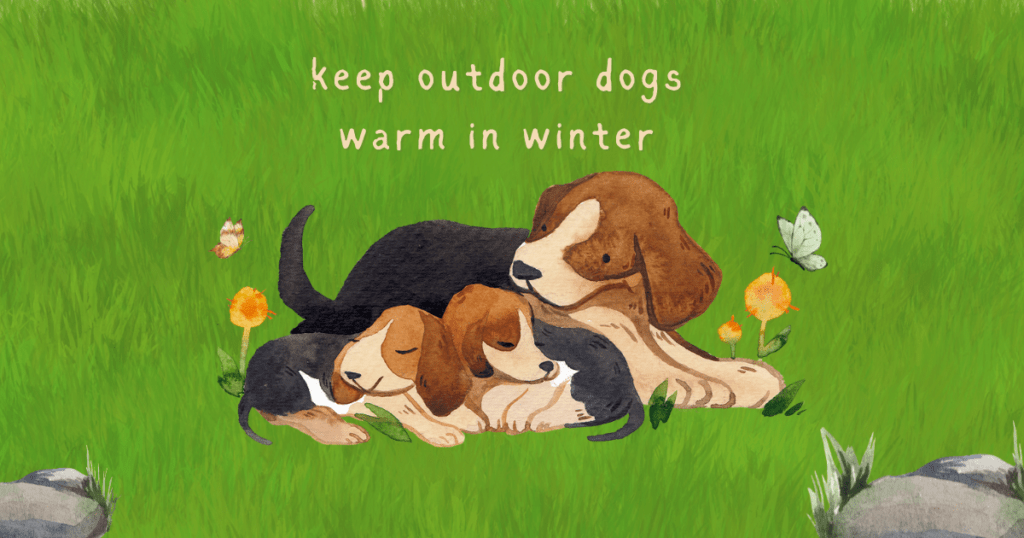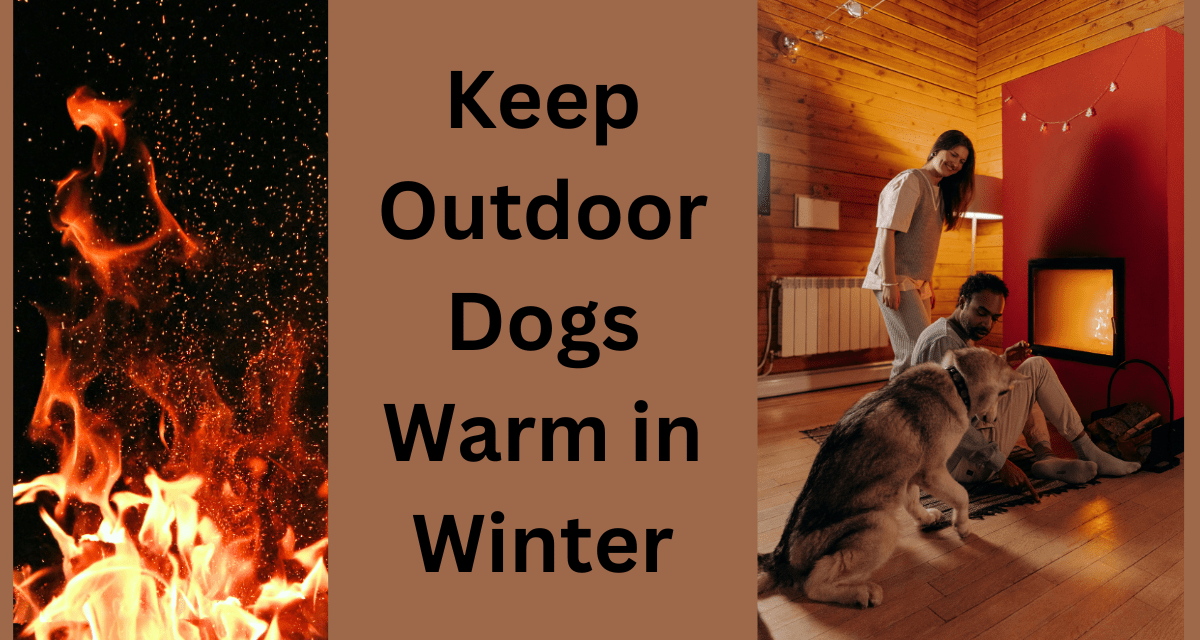Keep outdoor dogs warm in winter is essential to their well-being. With dropping temperatures and harsh weather conditions, dogs face substantial challenges, including the risk of hypothermia and frostbite. This article is geared towards pet owners, especially those with outdoor dogs, seeking practical and effective ways to protect their furry friends from the cold.
1. Shelter Solutions
Choosing the Right Dog House: When it comes to selecting a dog house, size and insulation are critical factors. A well-sized dog house should be large enough for your dog to stand up, lie down, and turn around comfortably but small enough to retain body heat. Opt for materials like wood or durable plastic that offer better insulation against the cold. Elevating the dog house on a platform or bricks can help avoid ground moisture, keeping it dry and warmer.
Adding Extra Insulation: To enhance warmth, consider lining the dog house with straw or hay, which are excellent insulators. Additionally, installing foam boards or thermal panels on the walls and floor can significantly improve heat retention. Heated pads or thermal blankets can provide extra warmth, ensuring your dog stays cozy during freezing nights.
Weatherproofing Techniques: Effective weatherproofing is vital. Using windbreaks, such as tarps or additional walls around the dog house, can block cold winds. Waterproofing the dog house by sealing any gaps or cracks ensures rain and snow do not seep inside. However, proper ventilation must be maintained to prevent moisture buildup and provide fresh air.
2. Providing Warm Bedding
Selecting Appropriate Bedding Materials: Choosing the right bedding can make a significant difference. Straw is a popular option due to its insulating properties, while blankets offer softness. Be mindful of the pros and cons; straw is excellent for warmth but needs regular replacement, and blankets should be cleaned frequently to avoid odors and flea infestations.
DIY Bedding Upgrades: For a DIY touch, you can make homemade heated bedding using microwaveable heating pads or hot water bottles wrapped in towels. Adding layers of insulation to existing bedding or rotating bedding regularly ensures it stays dry and effective in providing warmth.
Avoiding Common Bedding Mistakes: Avoid damp bedding, as it can quickly sap heat away from your dog. Regularly check the bedding for any signs of flea infestations and ensure it remains clean and allergen-free. Maintaining dry and warm bedding is crucial for your dog’s comfort and health.
3. Enhanced Nutrition and Hydration
Adjusting Caloric Intake: Cold weather increases your dog’s energy needs. Increasing food portions can help maintain their weight and energy levels. Opt for high-protein, high-fat diet options to provide the necessary calories. It’s essential to monitor your dog’s weight and adjust food intake accordingly to keep them healthy.
Providing Warm Meals: Offering warm foods can make a substantial difference. Warm broths, cooked meats, and gently heated dog food are great options. To warm up meals safely, use a microwave or hot water bath, ensuring the food is not too hot to avoid burns.
Ensuring Fresh Water Supply: Hydration is just as important in winter as in other seasons. Prevent water from freezing by frequently checking the bowl or using heated water bowls. Ensure your dog always has access to fresh, unfrozen water.

4. Warm Winter Wear
Selecting the Right Dog Apparel: Winter wear such as sweaters, coats, and booties can significantly help in keeping your dog warm. Choose materials like fleece or wool that provide optimal insulation. Ensure the apparel fits well—too tight can restrict movement, while too loose won’t retain warmth effectively.
DIY Clothing Solutions: If you prefer a personal touch, making homemade dog sweaters from old clothes can be a fun and practical solution. Ensure you use safe, non-toxic materials, and that the clothing doesn’t have any pieces that your dog might chew off and swallow.
When to Use Dog Apparel: Observe your dog for signs of cold discomfort, such as shivering or reluctance to stay outside. Use dog apparel in situations where exposure to cold is prolonged or intense. Introduce the clothing gradually to help your dog get used to it.
5. Exercise and Activity Considerations
Planning Safe Outdoor Activities: During winter, plan your dog’s activities thoughtfully. Limit exercise duration to prevent overexposure to the cold. Choose safe play areas free of ice to reduce the risk of slips and injuries. On extremely cold days, consider indoor exercise alternatives to keep your dog active.
Monitoring for Signs of Cold Stress: Be vigilant for signs of hypothermia, including shivering, lethargy, and difficulty walking. Recognize the symptoms of frostbite, such as discolored or hardened skin. If your dog shows any signs of cold stress, take immediate action to warm them up and seek veterinary care if necessary.
Post-Activity Care: Post-outdoor care is crucial. After returning indoors, warm your dog quickly by providing a cozy resting place. Check their paws for ice, salt, or any potential injuries. Ensuring your dog is dry and warmly enclosed helps maintain their body temperature.
recap
Keep outdoor dogs warm in winter requires proactive planning and care. From selecting the right shelter and bedding to providing nutritious warm meals and appropriate winter wear, these measures ensure your pet’s safety and comfort. Stay observant of your pet’s needs and prioritize their well-being during the cold months.
FAQs: Keep Outdoor Dogs Warm in Winter
What are the signs that my dog is too cold?
Signs include shivering, lethargy, whining, and curling up into a tight ball for warmth.
Can I bring my outdoor dog inside during extreme weather?
Yes, it’s highly recommended to bring your dog inside and keep outdoor dogs warm in winter during severe weather conditions.
Is it safe to use heating lamps or electric heaters in dog shelters?
While possible, it needs to be done with extreme caution to prevent burns or fires to keep outdoor dogs warm in winter
How often should I check my dog’s water to ensure it’s not frozen?
Check multiple times a day to ensure a constant water supply and make sure to keep outdoor dogs warm in winter
What should I do if my dog shows symptoms of hypothermia?
Immediately warm your dog by wrapping them in blankets, offer warm (not hot) drinks, and seek veterinary care promptly.


